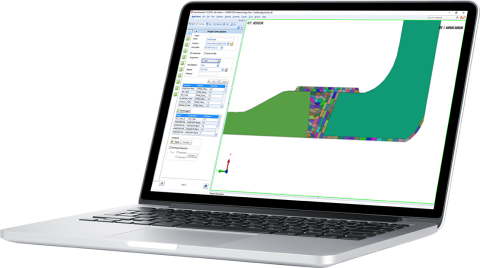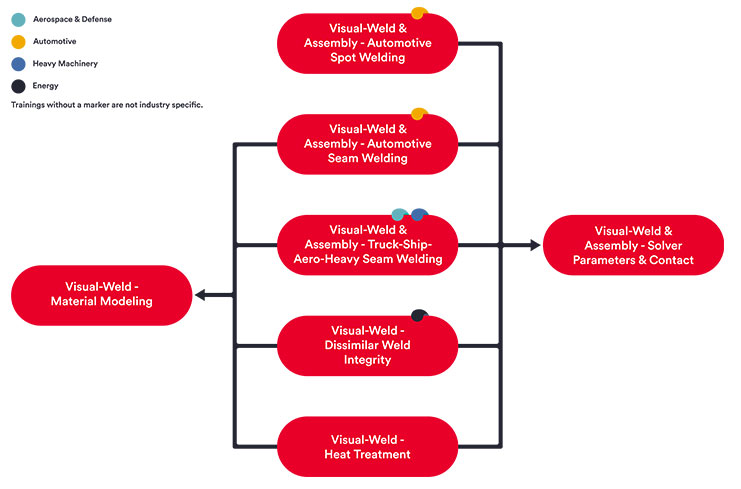Visual-Weld - Dissimilar Weld Integrity
Be able to translate the entire fabrication process into a virtual model that can simulate this process and its heat effects; model a complex fabrication process that includes cladding, heat treatment, welding, post-weld heat treatment, and machining; go from geometry to mesh to a simulation model to assessing computed results and assess computed temperature, phase transformations, distortion, and residual stresses. Be able to generate models that run stable, as fast as possible, still delivering accurate results and understand and apply specific modeling techniques (fast transient & instantaneous welding) to assess large 3D structures)



Audience
Engineers concerned with distortion and weld repair of thick multi-pass dissimilar welds

Prerequisites
Basic Knowledge of CAD, CAE, process, and material knowledge of dissimilar welds.


LEARNING PATH



SUGGESTED COURSES

概要
- Operate the graphic user interface of Visual Environment, focus welding
- Generate a multi-pass simulation model
- 2D and 3D examples
- Best practices for graphic user interface, Geometry to mesh, Material, Shrinkage effects, Heat sources / heat input – process definition, Clamping conditions, Contact, Solution parameters, Model check, Simulation runs, simulation monitoring, file structure, Troubleshooting and Post-processing
お探しのものが見つかりませんでしたか?
カスタマイズトレーニングを依頼

TRAINING PROGRAM
Day 1
- Concept of virtual dissimilar weld fabrication
- How to operate the Graphic User Interface & create own tailored toolbars
- How to go from a CAD model or a drawing to a 2D solid mesh with weld beads
- How to generate 3D solid meshes
- How to make sure meshes are good to go
Day 2
- 2D axial symmetric example – full process simulation
- Understand the contents of a material database, manage material databases
- Modelling of heat input, understanding process windows
- Understand the influence of process parameters and material on computed results
- Assess computed temperature, phase transformations, distortion, and residual stresses
- Manage changes of material for parts and wire, clamping conditions, and weld sequence
- Mesh density, time stepping and precision – Best performance without compromising accuracy
Day 3
- Expansion to 3D